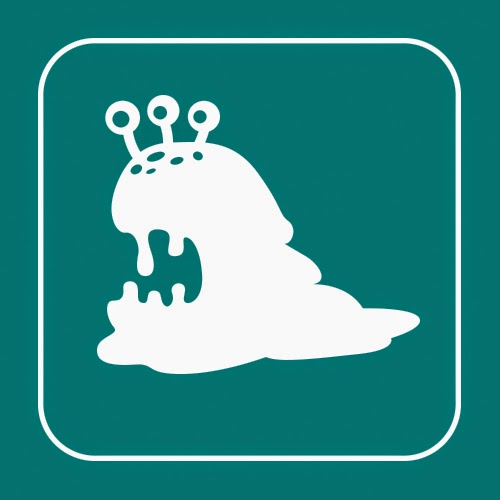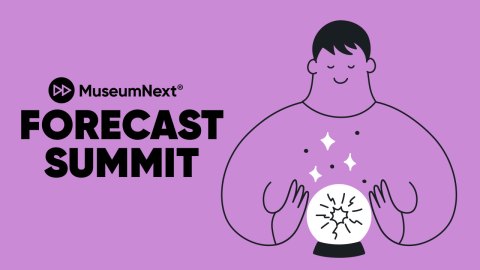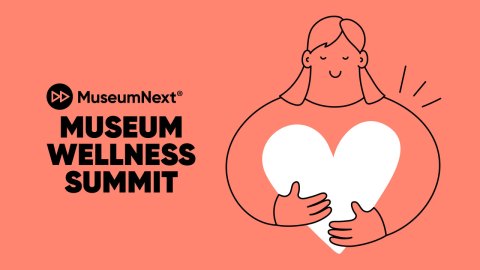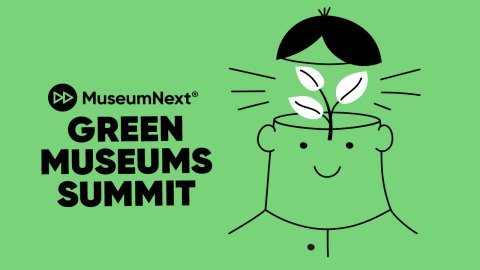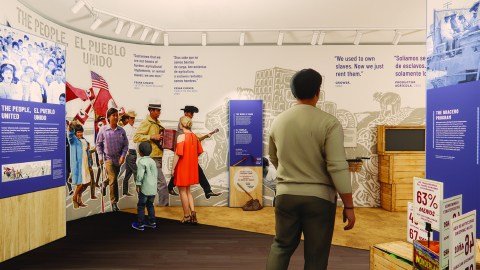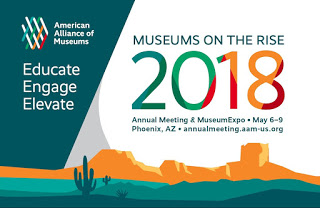
Every year I write a futurist’s guide to the AAM annual meeting, recommending sessions that explore trends shaping our world and examples of museums adapting to those trends. This being the tenth anniversary of CFM, I’ve cast a broad net, tagging sessions related to any of the themes we’ve explored through our lectures, reports, and six years of TrendsWatch. The listings in this post provide one way to navigate the plethora of offerings at the conference with the uber-theme of strategic foresight.
This year the AAM annual meeting is in Phoenix, May 6-9. Early Bird rates end tomorrow (Friday February 16). If you haven’t yet, register now to save some money!
Before I dive into the sessions, a word about CFM in MuseumExpo. Every year since our launch, we’ve orchestrated a little glimpse of the future in the exhibit hall: everything from communal drawing to a demonstration of Google Glass. This year, building on the exploration of Artificial Intelligence in TrendsWatch 2017, CFM will host a demonstration of chatbot technology in partnership with staff of The Studio of the Carnegie Museums of Pittsburgh. Chatbots are computer programs designed to simulate conversation with human users, and museums are just beginning to explore a number of potential applications for this technology including wayfinding, answering queries about the collection, and providing gamified visitor experiences. At the demo, housed in the Alliance Resource Center in MuseumExpo, attendees will have the opportunity to try out an early version of the Carnegie’s chatbot, Muse. On Monday and Tuesday, from 2-3 pm, Studio staff will hold “Chatbot Chats” to help attendees explore how conversational artificial intelligence can improve the visitor experience.
And now, the session recommendations:
Sunday, May 6
1 – 2:15 pm
This session explores another museum application of artificial intelligence: predictive analytics. The panelists will present three case studies, including the use of machine learning to forecast museum visitation.
This session explores creative ways that history and art museums are connecting with immigrant populations and their approaches to co-creation.
TrendsWatch 2017 advanced the case that museums need to embrace imperfection, and rapid iteration, in order to create things people want to experience and use. That can require a profound organizational culture shift! In this session staff of The Oregon Museum of Science and Industry shares its experiments using intentionally unfinished pop-up exhibits to engage audiences in a new way.
And for a deeper dive into interactive, user-centered design, follow up with either of these two sessions in the next time slot:
And for a deeper dive into interactive, user-centered design, follow up with either of these two sessions in the next time slot:
2:30 – 3:45 pm
This hands-on classroom session will explore how a five-step process (empathize, define, ideate, prototype, and test) can develop welcoming, inclusive, and collaborative museum experiences.
Participatory design merges community engagement and design thinking to identify smart approaches to persistent problems. This hands-on workshop takes the mystery out of participatory design by providing a step-by-step process that attendees can put to work at their own museums.
4 – 5:15 pm
CFM session!
CFM director Elizabeth Merritt (that’s me) will lead a discussion with three thought leaders who contributed articles to the recent special issue of the Alliance’s Museum magazine set in the year 2040. Alliance CEO Laura Lott will speculate about the future of nonprofit leadership, sustainability advocate Sarah Sutton will sketch a vision of museums as vital partners in responding to climate change, and Omar Eaton-Martínez, from the National Museum of American History, will challenge us to consider whether the United States may someday need its own Truth and Reconciliation Commission.
Monday, May 7
8:45 – 10:00 am
Elif Gokcigdem (editor of Fostering Empathy Through Museums) is joined by Thomas Rockwell (Exploratorium), Orna Cohen (Dialogue Social Enterprise), and researcher Zorana Ivcevic to lead attendees in interactive exercises on fostering empathy.
The need for meaningful metrics is a theme that runs through much of CFM’s work, and when it comes to education, there is a growing consensus that social/emotional learning is as important as mastery of facts or skills. This session promises to explore how museum professionals can measure learning beyond cognition, including feelings, attitudes, empathy, and behavior.
1:45 – 3:00 pm
I indexed this session under both Empathy, and Migration, as Kathleen Quin from the Penn Museum will present a case study of a new exhibition at the Penn Museum that pushed visitors to empathize with Syrian refugees and those trying to salvage cultural heritage.
This session highlights museums that are engaging incarcerated audiences and creating bold new programming with incarcerated artists and storytellers. Presenters include staff from the International Coalition of Sites of Conscience, the Museum of International Folk Art, the Museum of Tolerance, and Eastern State Penitentiary Historic Site.
I was very disappointed that Tui Te Hau couldn’t join us for last year’s panel on museums and coworking/incubator spaces (though she did contribute some thoughts via this post on the CFM Blog). I’m thrilled that she’s giving a session in Phoenix, focusing on Mahuki, the innovation hub she directs at Te Papa in New Zealand. In this session she will talk about how museums can apply the Mahuki innovation/accelerator model to their own community engagement strategies; build relationships with the investment, start-up, and investment communities; and employ new ways of supporting diversity and inclusion in activities that also contribute to the community’s economy.
Speculating on museum jobs of the future is a favorite pastime here at CFM! (See, for example, the new jobs section of Museum 2040.) Twenty years ago “community engagement curator” was a job of the future, and it is still a relatively new and evolving role. This session will present multiple views of how community engagement curators (and those with similar titles) position themselves to act as conduits between the public and the museum.
Tuesday, May 8
8:45 – 10 am
In the wake of the Charlottesville riots, newspapers nationwide have called for the removal of Confederate war monuments from public spaces—and for their “safe housing” in museums and history centers. At this roundtable, historians, curators, educators, and architects will moderate a discussion with the AAM community about this complicated proposition.
This time slot also presents two options for diving into museum applications of virtual reality:
Nik Honeysett, Chief Executive Officer of the Balboa Park Online Collaborative, moderates an open discussion about how to create virtual reality experiences that are inclusive and enhance learning. Breaking down the creation process, the panelists will look into the nuts and bolts of how two museum virtual reality experiences were produced.
Three museums that employ virtual applications and 3-D technologies will share methods and outcomes of their work. Panelists from Vizcaya Museum & Gardens, the Trammell & Margaret Crow Collection of Asian Art, and the Toledo Museum of Art will discuss challenges, share practical and technical constraints, and present examples of digital engagement.
1:30 PM – 2:45 PM
Staff from the Sept 11 Memorial, US National Holocaust Museum, and the Brooklyn Museum will talk about how they foster empathy to tackle genocide, racism, xenophobia, and Islamophobia.
If you’ve read TrendsWatch 2017 you know that I LOVE THIS SESSION. It premiered at the annual meeting in 2012, and since that time has usually had standing-room only crowds. This year the organizer writes: “Resources squandered, stakeholders alienated, deadlines missed: we honestly admit our biggest blunders and what learned from them. A crowdsourced contest awards the AAM Epic Failure Trophy of 2018 to the most honest person in the room.” Go. Share. Emote. Vote.
3:00 – 4:15 pm
As the population ages and rates of dementia increase, museums have the potential to directly impact public perceptions and quality of life for individuals with dementia and their care partners. Presenters at this session share how several museums have used historic collections to create new opportunities, including group programs and training tools, and explore potential challenges of offering such programs.
4:30 – 5:30 pm
This is an opportunity to join the Latino Network to discuss how current immigration politics and policies affecting immigrant and refugee communities have an impact in museums worldwide. The organizers encourage you to bring your questions and share your approaches to this issue.
Wednesday, May 9
10:15 – 11:30 AM
This talk show format session will examine, challenge, and describe efforts to achieve and assess empathy at an organizational level. Moderated by Gretchen Jennings, the panelists are drawn from the Minnesota Historical Society, the Detroit Institute of Arts, and the Museum Studies program at George Washington University.
The Sustainability Excellence Award recognizes museum practices that reflect a significant change in policies or approaches, resource use or environmental impact. This session will explore this year’s winners’ roads to success, behind-the-scenes challenges, reflections on progress, daily inspirations, and more.
11:45 – 1:00 pm
This session offers three approaches to interaction design deployed at NMNH and NMAH. Each space has a different target audience and a different model for engaging visitors—all three promote interactive, inquiry-based learning.
Presenters will share how Vizcaya Museum and Gardens, Denver Art Museum, and the Museum of Texas Tech University & Lubbock Lake Landmark have integrated accessible technologies into their collections and programmatic interpretation. Speakers will discuss challenges, including practical and technical constraints, and share examples of accessible technologies.
3:00 – 5 pm
One core story element in CFM’s most recent publication, Museum 2040, was the rise of “hybrid organizations”—institutions that merge formerly separate functions such as senior center and preschool, civic center and school—or museum and hospital. On this tour you can catch a glimpse of this possible future at the Mayo Clinic Center for Humanities in Medicine, where they integrate the arts and other expressions of human culture into the healing environment. This behind-the-scenes presentation and tour will focus on a collaboration that to brings museum theories and practice to nontraditional spaces.
